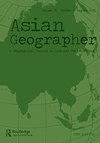评估前工业化社会农业适应气候变化的有效性
IF 2.2
Q2 GEOGRAPHY
引用次数: 14
摘要
农业适应的有效性决定了该部门对气候变化的脆弱性,特别是在工业化前时代。然而,这种有效性很少得到定量评价,特别是在大的空间和长期尺度上。本研究涵盖了公元1500-1800年的前工业社会。由于这一时期缺乏技术创新,农业生产主要通过增加耕地(土地投入)和增加单位土地的劳动力投入(劳动力投入)来增加。据此,对这两种方法进行了定量检验。统计结果表明,在研究尺度内,土地投入比劳动力投入更能有效缓解气候影响。尽管如此,从大空间和长期尺度的角度来看,这些观察结果共同改进了Boserup的理论。本文章由计算机程序翻译,如有差异,请以英文原文为准。
Evaluating the effectiveness of agricultural adaptation to climate change in preindustrial society
The effectiveness of agricultural adaptation determines the vulnerability of this sector to climate change, particularly during the preindustrial era. However, this effectiveness has rarely been quantitatively evaluated, specifically at a large spatial and long-term scale. The present study covers this case of preindustrial society in AD 1500–1800. Given the absence of technological innovations in this time frame, agricultural production was chiefly augmented by cultivating more land (land input) and increasing labor input per land unit (labor input). Accordingly, these two methods are quantitatively examined. Statistical results show that within the study scale, land input is a more effective approach of mitigating climatic impact than labor input. Nonetheless, these observations collectively improve Boserup's theory from the perspective of a large spatial and long-term scale.
求助全文
通过发布文献求助,成功后即可免费获取论文全文。
去求助
来源期刊

Asian Geographer
GEOGRAPHY-
CiteScore
3.30
自引率
0.00%
发文量
7
期刊介绍:
Asian Geographer disseminates knowledge about geographical problems and issues focusing on Asia and the Pacific Rim. Papers dealing with other regions should have a linkage to Asia and the Pacific Rim. Original and timely articles dealing with any field of physical or human geographical inquiries and methodologies will be considered for publication. We welcome, for example, submissions on people-environment interactions, urban and regional development, transport and large infrastructure, migration, natural disasters and their management, environment and energy issues. While the focus of the journal is placed on original research articles, review papers as well as viewpoints and research notes under the category of “Asian Geography in Brief” are also considered. Review papers should critically and constructively analyse the current state of understanding on geographical and planning topics in Asia. The ‘Asian Geography in Brief’ section welcomes submissions of applied geographical and planning research about Asia. The section aims to showcase (1) the diverse geography and planning of Asia; and (2) the diverse geographical and planning research about Asia. The journal will also publish special issues on particular themes or areas. Book reviews can be included from time to time.
 求助内容:
求助内容: 应助结果提醒方式:
应助结果提醒方式:


